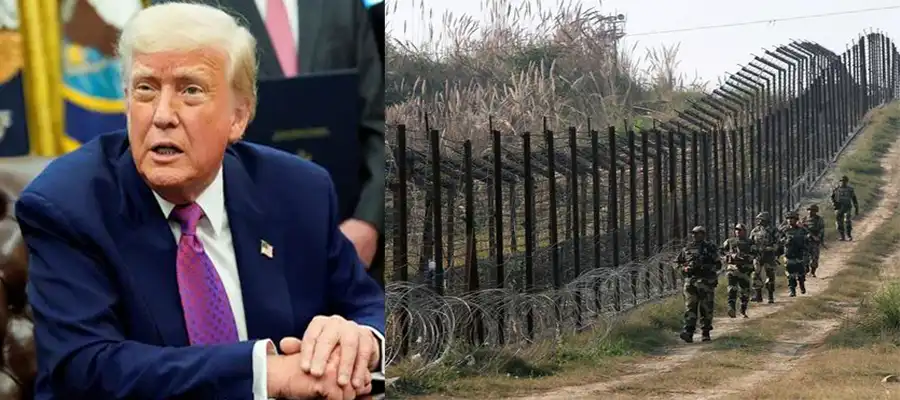In a detailed analysis, The New York Times has reported that although the United States was initially hesitant to intervene in the latest India-Pakistan tensions, the Trump administration was eventually compelled to act due to fears that the situation could spiral into a full-scale war — possibly even involving nuclear weapons.
Key reasons for U.S. involvement:
- Nuclear Risk Concerns:
The U.S. was drawn in when Pakistan feared that its Strategic Plans Division— the body that guards its nuclear arsenal — could be decapitated following India’s missile strike on Pakistan’s Nur Khan Air Base, located dangerously close to nuclear command centers.
- Strike on Nur Khan airbase:
The Indian Air Force’s strike on May 10 on Nur Khan, a vital logistics and refueling hub for Pakistan's military, alarmed both Pakistan and Washington. The proximity of this base to Pakistan's nuclear command structure heightened fears of an existential threat.
Dramatic drone escalation:
Pakistan had earlier sent around 300-400 drones into Indian airspace, reportedly to test Indian air defenses. The growing aggression from both sides increased the urgency for diplomatic intervention.
Key players & actions taken:
US Vice President JD Vance & Secretary of State Marco Rubio:
Although Vance initially stated on Fox News that the conflict was “none of our business,” within 24 hours he and Rubio were tasked with urgent diplomacy.
- Vance reportedly called Indian PM Narendra Modi directly, urging restraint.
- Rubio contacted Pakistan Army Chief General Asim Munir, taking advantage of longstanding U.S. military ties with Pakistan's armed forces.
White house’s rising alarm:
As India began to shift its focus from terror camps to Pakistani military targets, the U.S. feared uncontrollable escalation and acted swiftly.
Pakistan’s nuclear signaling:
While Pakistan’s defense minister publicly downplayed nuclear threats, local media claimed that a high-level meeting of the National Command Authority—which oversees nuclear decision-making — had been convened.
Though this was later denied officially, the very suggestion signaled rising tensions.
Diplomatic backchannel & ceasefire outcome.
Saudi and UAE Mediation.
Initial efforts by Gulf nations had little impact on the warring sides.
U.S. as effective mediator:
According to a senior Pakistani intelligence official, American intervention — particularly Rubio’s contact with the Pakistani military — was crucial in reaching the ceasefire.
India’s alleged strategy:
The same intelligence official claimed India was trying to provoke Pakistan into using F-16 jets so they could be shot down — possibly as a public display of military superiority using U.S.-supplied aircraft.
Altogether, the NYT's reporting underscores how the U.S. quietly played a decisive role in preventing a dangerous escalation between India and Pakistan. While public statements were minimal, behind-the-scenes diplomacy — driven by fears of nuclear confrontation — was fast, coordinated, and effective.
